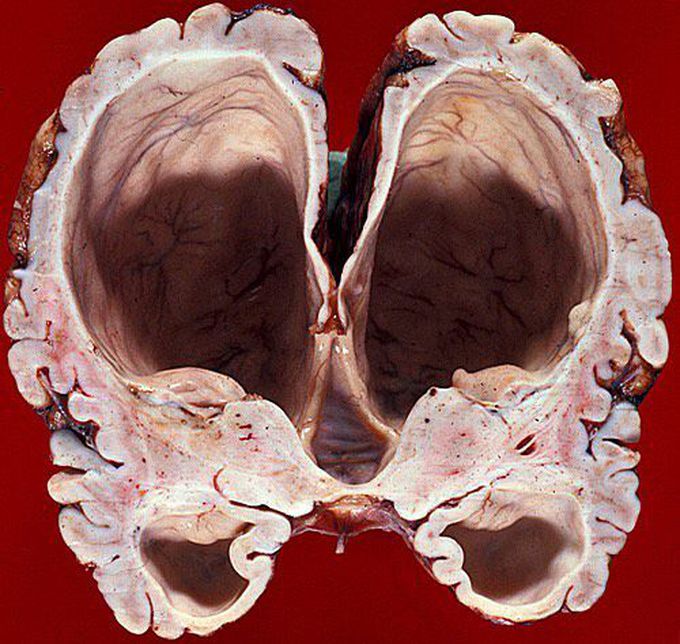


Hydrocephalus ex vacuo with some extensive white matter atrophy!
Hydrocephalus ex vacuo, also known as compensatory enlargement of the CSF spaces, is a term used to describe the increase in the volume of CSF, characterised on images as an enlargement of cerebral ventricles and subarachnoid spaces, caused by encephalic volume loss. It can be classified as a communicating hydrocephalus without obstruction to CSF absorption, although we usually do not refer to them as a hydrocephalus. It is usually seen in asymptomatic elderly people as a result of ageing brain with related volume loss, as well in pathological conditions that promote brain shrinkage such as in generalised brain degeneration (Alzheimer disease and leukodystrophies) or due to focal damage (stroke and traumatic injuries). These conditions results in progressive cortical atrophy which subsequently leads to compensatory dilation of the cerebral ventricles known as "hydrocephalus ex vacuo".
Living with Alzheimer’s disease was one of the hardest experiences of my life. The memory loss, the confusion, and the fear of losing myself weighed on me every single day. I had tried so many treatments and medications, but nothing seemed to stop the disease from progressing.Out of both hope and desperation, I came across NaturePath Herbal Clinic. At first, I was skeptical, but something about their natural approach and the stories I read gave me the courage to try one more time.I began their herbal treatment program, and within a few weeks, I noticed small changes clearer thinking, better focus, and a calmer mind. Over the months, those improvements became more and more obvious. Today, I can truly say my life has changed. My memory has improved, and I feel more present and engaged than I have in years.This isn’t just a testimony it’s a heartfelt recommendation to anyone struggling with Alzheimer’s or other chronic conditions. Don’t give up hope. I’m so grateful I gave NaturePath Herbal Clinic a chance. Visit their website to learn more: www.naturepathherbalclinic.com info@naturepathherbalclinic.com


